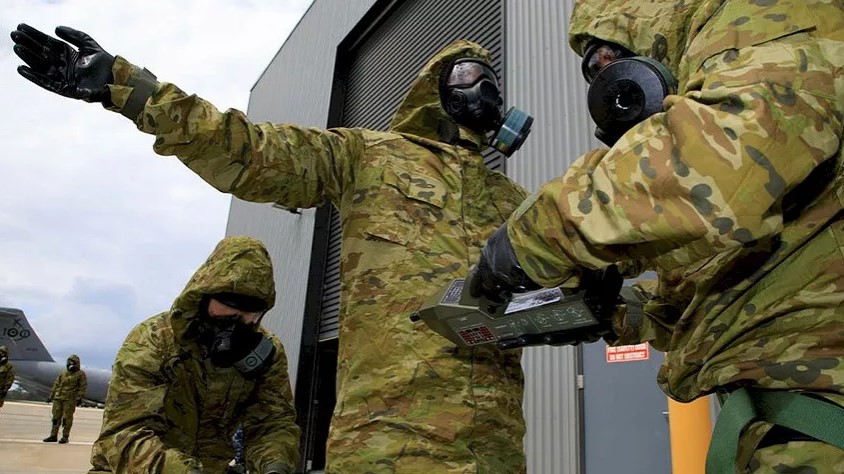The RAAF has announced it’s completed an exercise which teaches personnel how to survive a chemical or nuclear attack.
Exercise Toxic Safari 22 was held at Base Amberley and the training included teaching participants how to remove contaminated equipment.
Specifically, the program – which involved RAAF participants from Combat Support Group, Air Mobility Group and Army Headquarters – aimed to enhance overall capability to “survive to manoeuvre” in a chemical, biological, radiological and nuclear defence (CBRND) environment.
Training also involved processing of chemically contaminated personnel at an exchange airfield, including decontamination operations.
Flight Sergeant Anthony Hartley, from Headquarters Combat Support Group, said, “A method of achieving this is with a phased step-by-step process of removing contaminated equipment and effects utilising a personnel decontamination station (PDS).
“The purpose of the PDS is to remove contamination from personnel as soon as possible to avoid spreading the contamination agent.
“When the person reaches the end of the PDS, they should be free of any contamination. Every effort to minimise the spread of further contamination must be taken throughout the PDS.”
Exercise Toxic Safari 22 also sought to familiarise personnel with protective equipment, supplied under project LAND 2110. It also involved role-players to assist in shaping realistic warfighting activities.
“It’s been great to see another side to Air Force that I wouldn’t normally see,” said Pilot Officer Benjamin Sherry, from No. 6 Squadron.
“Being a role-player has also allowed me to work together with members from other units which has been really interesting.”
Exercise Toxic Safari 22 is one of a number of RAAF exercises to take place this year.
The RAAF’s Exercise Diamond Storm 22 has kicked off in the Northern Territory from RAAF Bases Darwin and Tindal, and at Timber Creek, Douglas Daly region and the Delamere Air Weapons Range.
The month-long exercise is the last of three activities which form part of the air warfare instructor course (AWIC), following Exercise Diamond Seas and Diamond Shield.
Over 1,400 Defence personnel are expected to participate alongside US counterparts based in the Top End, operating more than 60 aircraft.
The 2022 iteration is also set to involve trainee air warfare instructors from the F-35A Lightning II, P-8A Poseidon and combat controller communities.
In March, Australian Aviation reported how US Marines landed in RAAF Base Darwin to prepare for combined training exercises with the ADF.
Marine Rotational Force – Darwin (MRF-D) will continue until October, and this year’s contingent will be made up of personnel from the 1st Marine Expeditionary Force, based at Camp Pendleton in southern California.
The troop rotation – which enters its 11th year since the establishment of the bilateral defence arrangement – will this year include crisis response exercises and engagement with regional partners for multinational interop ability training.
The MRF-D forms part of the United States Force Posture Initiatives, which also include Enhanced Air Cooperation between the Royal Australian Air Force and US Air Force.

















Adrian P
says:Nothing new.
Nuclear Biological Chemical Defence procedures were well established when I was an apprentice in a naval dockyard 40 years. Will come in handy if there are nuclear accidents involving nuclear reactors.
The additional cost of nuclear energy nobody wants to talk about.
Steve
says:Very little content as to the actual training in surviving a nuclear strike on any given facility in the first place. Never mind the cleanup.